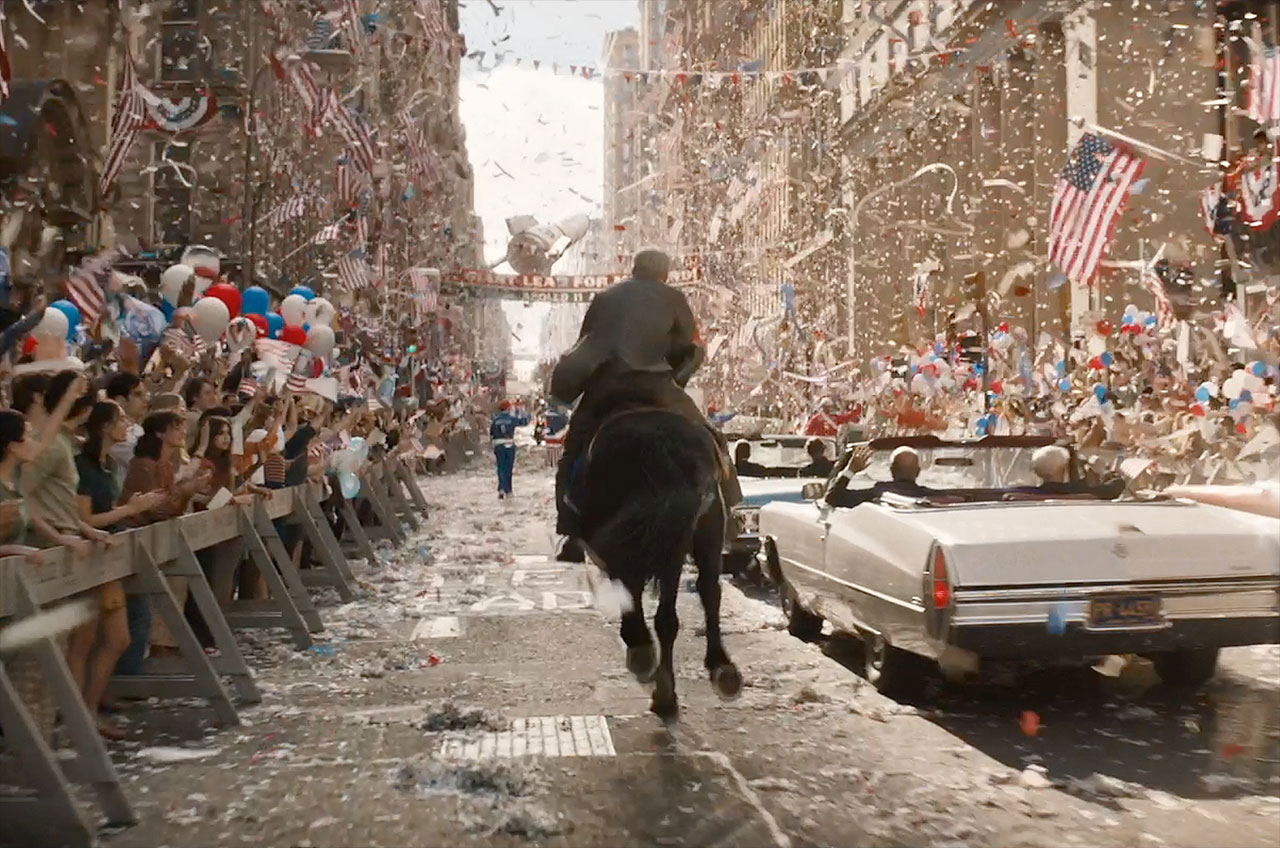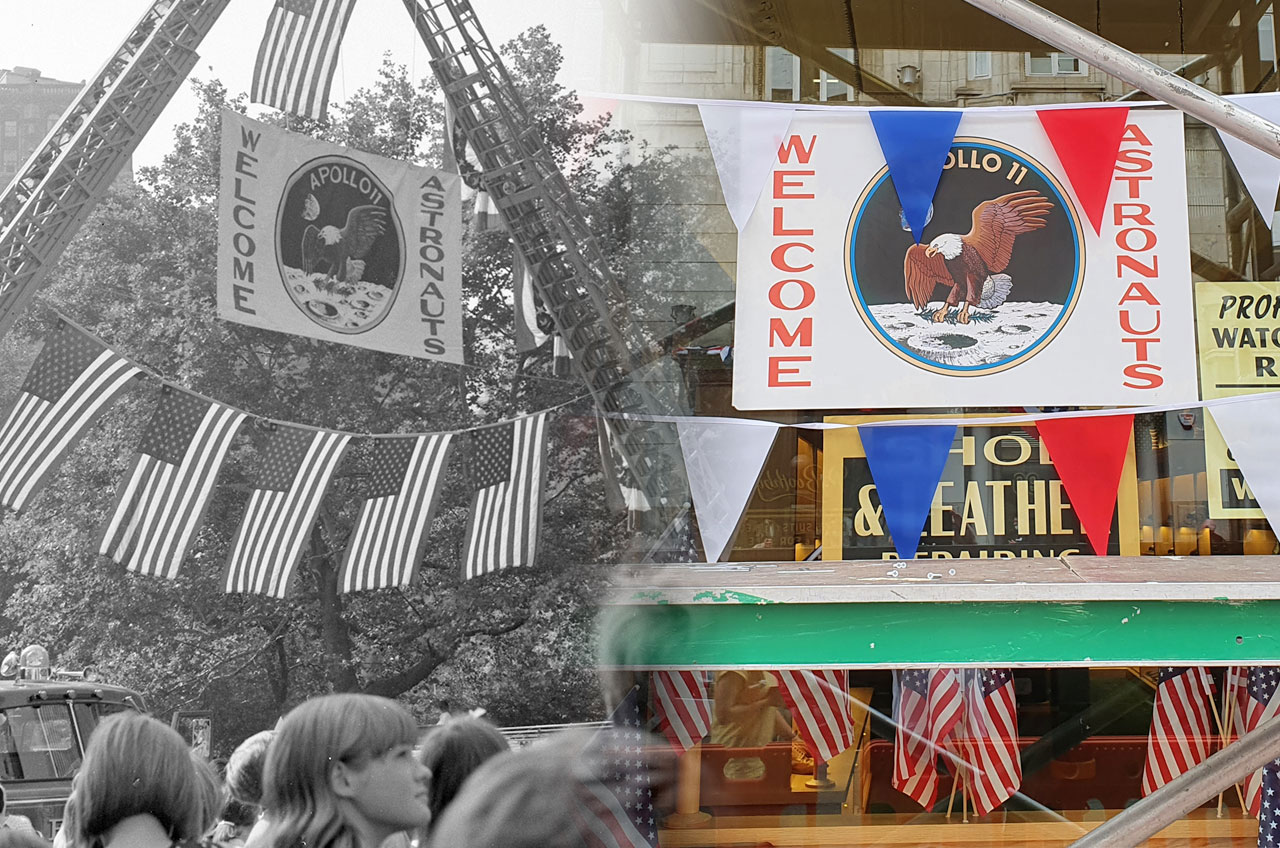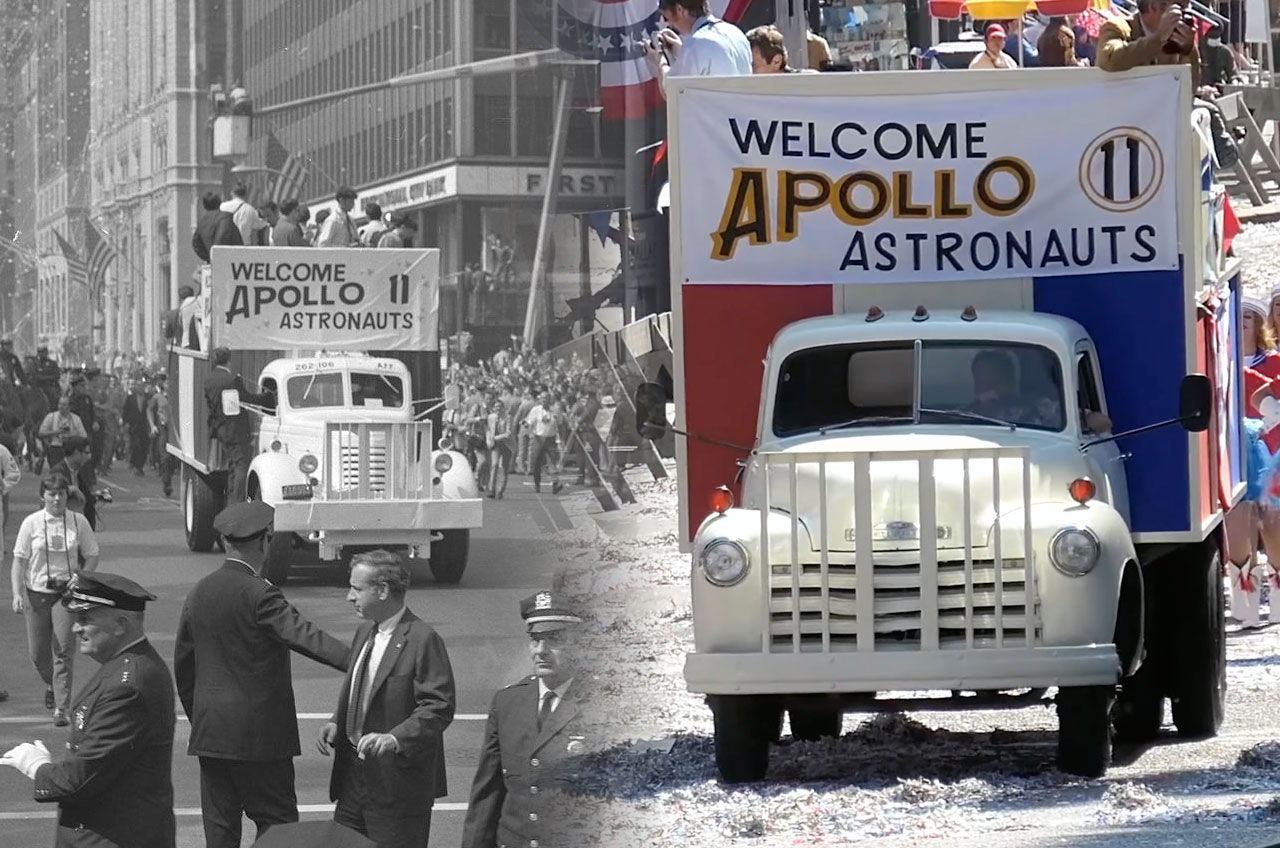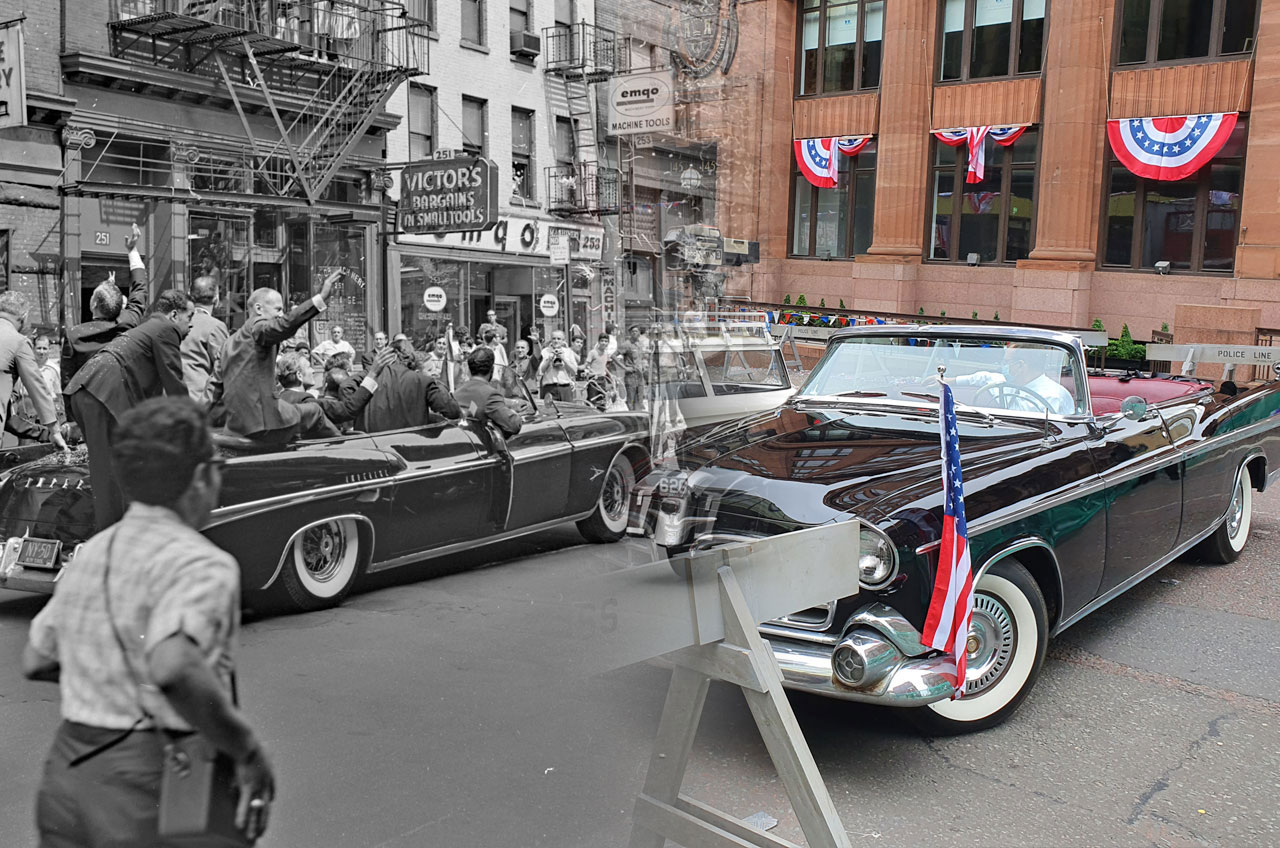
Indiana Jones changes the course of space history in his fifth and final big screen adventure.
The fedora-wearing, whip-bearing archeologist (played by Harrison Ford) crosses paths with four of NASA's most famous figures, sort of, in "Indiana Jones and the Dial of Destiny," now playing in theaters. (Warning: Spoilers follow, but this article stays clear of the film's major plot points.)
After a brief prologue, the movie opens in the summer of 1969. Specifically, it is Wednesday, Aug. 13, 1969, a work day for Dr. Jones, but a day off for millions in Manhattan, where the Apollo 11 astronauts are set to be celebrated with a ticker tape parade.
But things do not go to plan for Indy, who quickly finds himself being chased (on horseback, no less) through the same city streets as the parade is proceeding. It is not long before he catches up with the convertible carrying Neil Armstrong, Buzz Aldrin and Michael Collins (three extras in uncredited roles), bringing the festivities to a screeching halt.
In pursuit of Indy are a team of henchmen accompanying Jürgen Voller, a.k.a. Dr. Schmidt (Mads Mikkelsen), a former Nazi who led the team that built the rocket that took the astronauts to the moon. If that sounds like another figure from NASA history, it should — but then again, maybe not (more on that below).
Welcome Apollo 11 astronauts to... Glasgow
Without having a time machine to transport the cast and crew back to 1969, the production team had to find the next best place to re-stage the Apollo 11 ticker tape parade. That location turned out to be in Scotland.
"We needed a location for the chase and parade sequence through Midtown east and up towards Hunter College, and the scale of the buildings in Glasgow were really great for that," said production designer Adam Stockhausen in an interview conducted with Lucasfilm.

The team looked at period footage and photos of the real parade for inspiration on how to dress the streets and what vehicles to include in the parade. Eagle-eyed viewers will spot signs, banners and pennants that are an exact match for actual decorations that lined the streets of Manhattan more than 50 years ago.
According to the film's production notes, action vehicles supervisor Alex King was keen to include the 1952 Chrysler Imperial Parade Phaeton that carried Armstrong, Aldrin and Collins through the ticker tape parade up Broadway. But only three versions of the car were ever made, so King was forced to procure a similar Chrysler, remove the roof, and paint it black.
There were other differences, as well. In the movie, the Apollo 11 crew and their families are accompanied by a float with a large moon globe and a balloon shaped like a rocket. Neither were part of the real parade, though the dancers in red, white and blue outfits were indeed there.
"We added a few of our own things, parade floats and pieces that weren't in the original, but the skeleton of it is really from the actual parade," said Stockhausen.

Making the transformation even more impressive was the time in which it was done. The team spent just three weeks dressing Glasgow's main artery, St. Vincent Street, which was then closed to the Scottish public for seven days as the filming took place.
"You can't walk into a downtown metropolitan area and just take it over for three months," Stockhausen said. "You have to do your work in as compressed a period of time as you can possibly manage and then get out and let people get back to their lives. So, there was an incredible intensity for everyone to rush in and do all this dressing, put up all these signs, put up all this bunting. It was go-go-go."
The team's pace was, in a way, an inadvertent tribute to the real parade, too. As opposed to being held up by an archaeologist on the run, the astronauts' motorcade sped through the streets, surpassing their schedule. So much so, that spectators were still arriving after the procession had come and gone.
The mayor's office attributed the rush to NASA officials, who were concerned that the astronauts would fall behind schedule. After the parade (which they completed 30 minutes early) and visits to City Hall and the United Nations, the Apollo 11 crew were booked to appear at another ticker tape parade in Chicago and then a state dinner in Los Angeles the same day.

Voller vs. von Braun
Indiana Jones' other brush with space history is found in the back story of his "Dial of Destiny" foe, Dr. Voller.
"Our villain [was] modeled after Wernher von Braun, who was a famous Nazi rocket scientist who came to this country and helped us with our Apollo program and our rocket program at NASA," said director James Mangold. "[He] is a character that I thought was very interesting to show, even from a historical basis, how some pretty brilliant Nazi minds had managed to make a home in America and a life for themselves and embed themselves in the system that reveals itself in our movie."
Although not explicitly stated in the film, Voller's history aligns with Operation Paperclip, the real program that brought more than 1,600 German scientists, engineers and technicians from post-Nazi Germany to the United States to work for the government. Von Braun and his 130-member rocket team was included in that count.
Like von Braun, Voller's focus is on his research and not the politics surrounding it.
"He's a man who is very, very passionate about his job, the science of what he's doing and less so with the ideology of what he's doing," Mikkelsen told Entertainment Weekly.

For his part, the actor did not play into the stereotype of a crazed rocket scientist.
"We wanted him to be a man who kind of blended in once he moved to America because he's predominantly a scientist," Mikkelsen said in a Lucasfilm interview. "Voller's pragmatic. He's a restrained character. He's a man you would pass on the street."
To be clear, none of the actual Operation Paperclip members, von Braun included, ever turned against the United States. Nor was the real von Braun part of the Apollo 11 ticker tape parade in New York City.
In fact, von Braun may exist in the Indiana Jones universe. In "Indiana Jones and the Tomb of the Gods," a Dark Horse Comics limited series, the German rocket scientist is cited by name.
Follow collectSPACE.com on Facebook and on Twitter at @collectSPACE. Copyright 2023 collectSPACE.com. All rights reserved.







